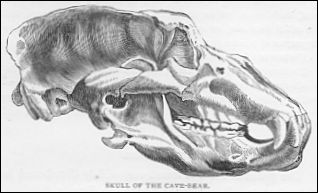

Poor, little, defenseless, primitive man. No claws, insignificant teeth, a pitiful creature able to outrun nothing larger than a mouse—how did he ever manage to survive in a world full of predators? Except, just possibly, this widespread image of our early ancestors isn't exactly accurate.
One evolutionary pathway that man has followed is well beaten. Numerous mammalian lines have taken the tack that if you can't beat them, outgrow them. We tend to forget that we are giants, perhaps because we see our brother behemoths and forget that these represent only a minute percentage of animals. Among living predatory mammals, only the great cats, the larger bears, and possibly the social dogs pose a significant threat to man. And although prehistoric times may have added a few, such as sabertooth cats, this has largely been the case throughout the reign of modern mankind.
This is as true in our Chihuahuan Desert as elsewhere. Historically,
Mountain Lion, Jaguar, and Grizzly have pretty much been it—and none of these seems
particularly attracted to human flesh.

Contributor: Arthur H. Harris, Laboratory for Environmental Biology, Centennial Museum, University of Texas at El Paso.
Desert Diary is a joint production of the Centennial Museum and KTEP National Public Radio at the University of Texas at El Paso.

Skull of a Pleistocene Cave Bear. Big enough, but was it a threat? After W. H. D. Adams, 1872.